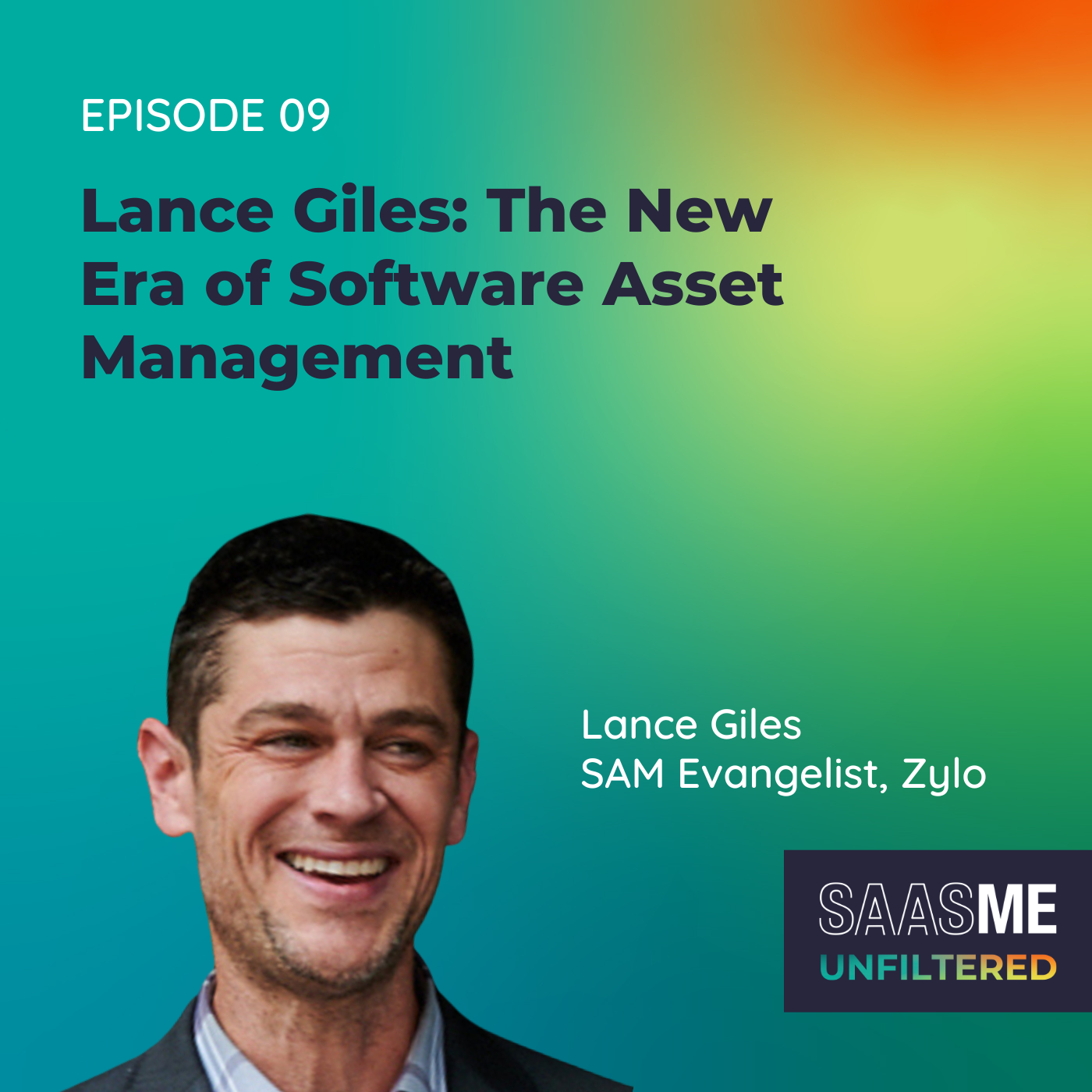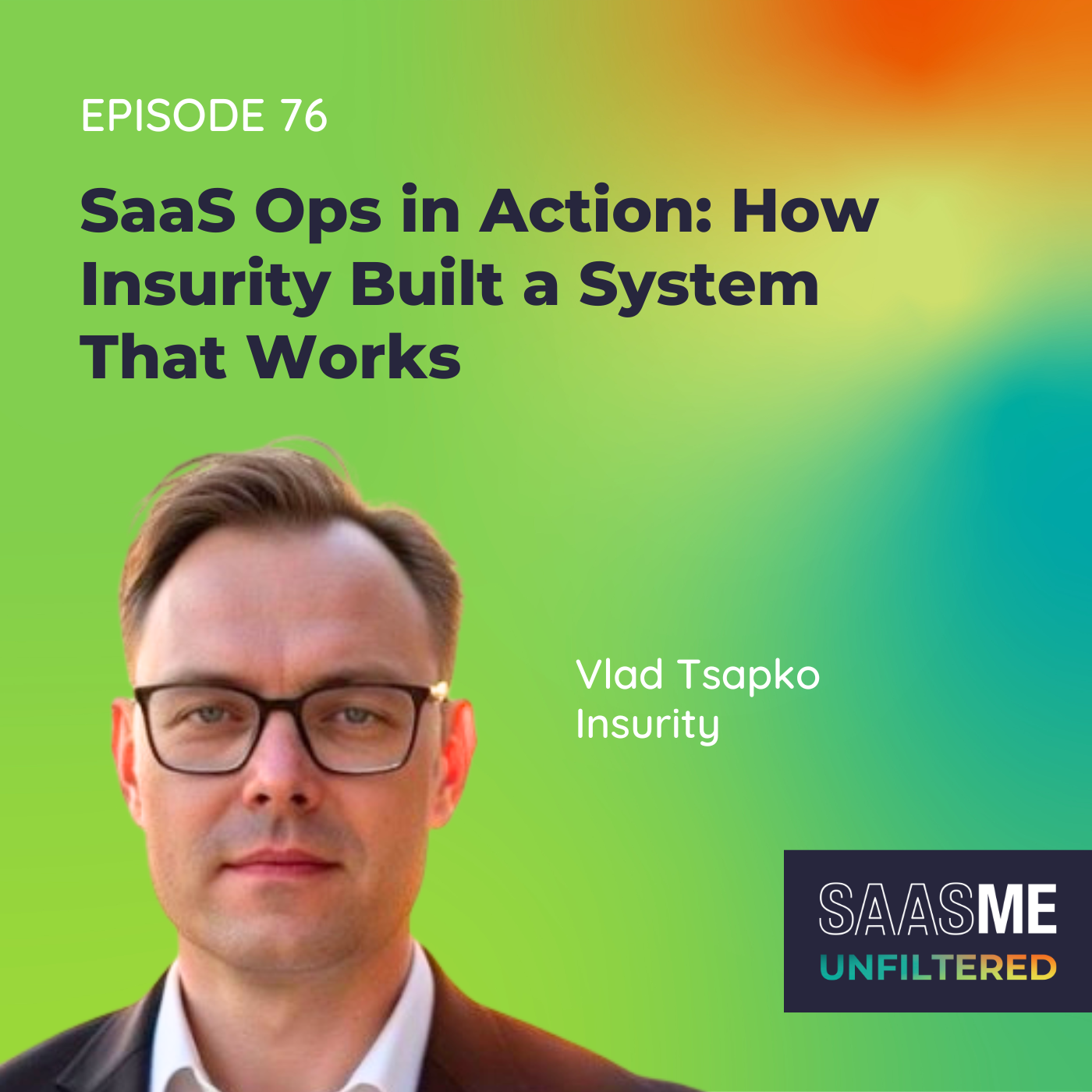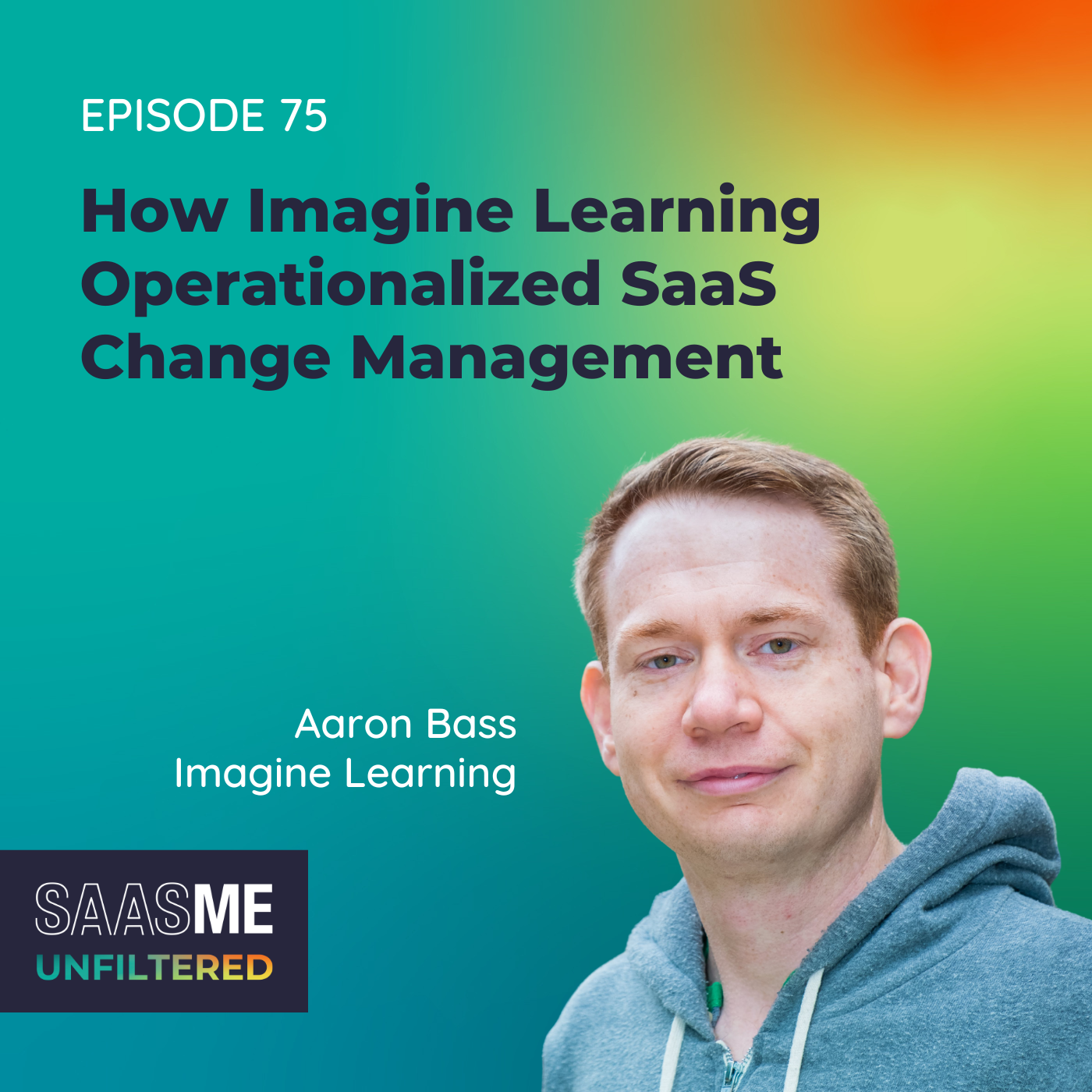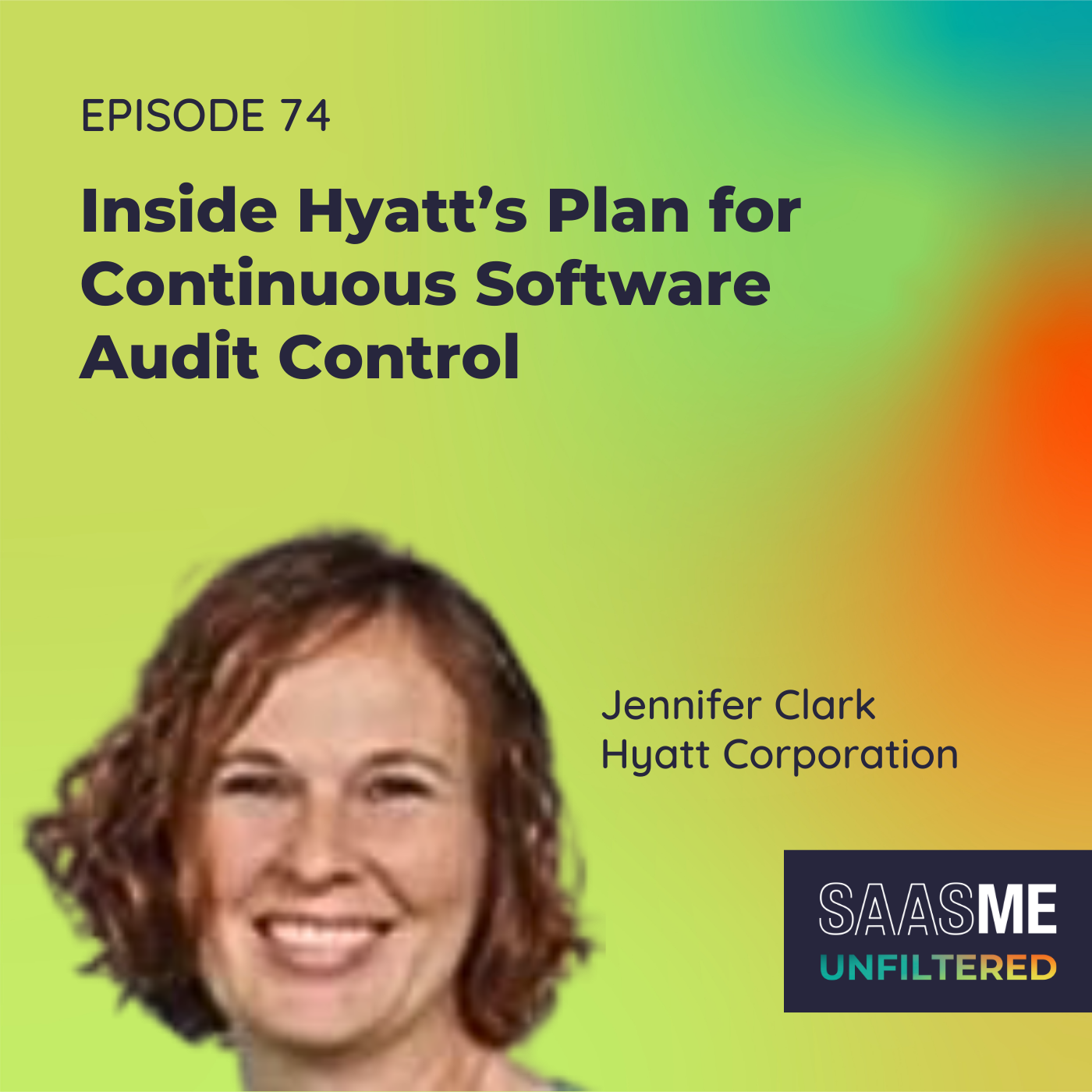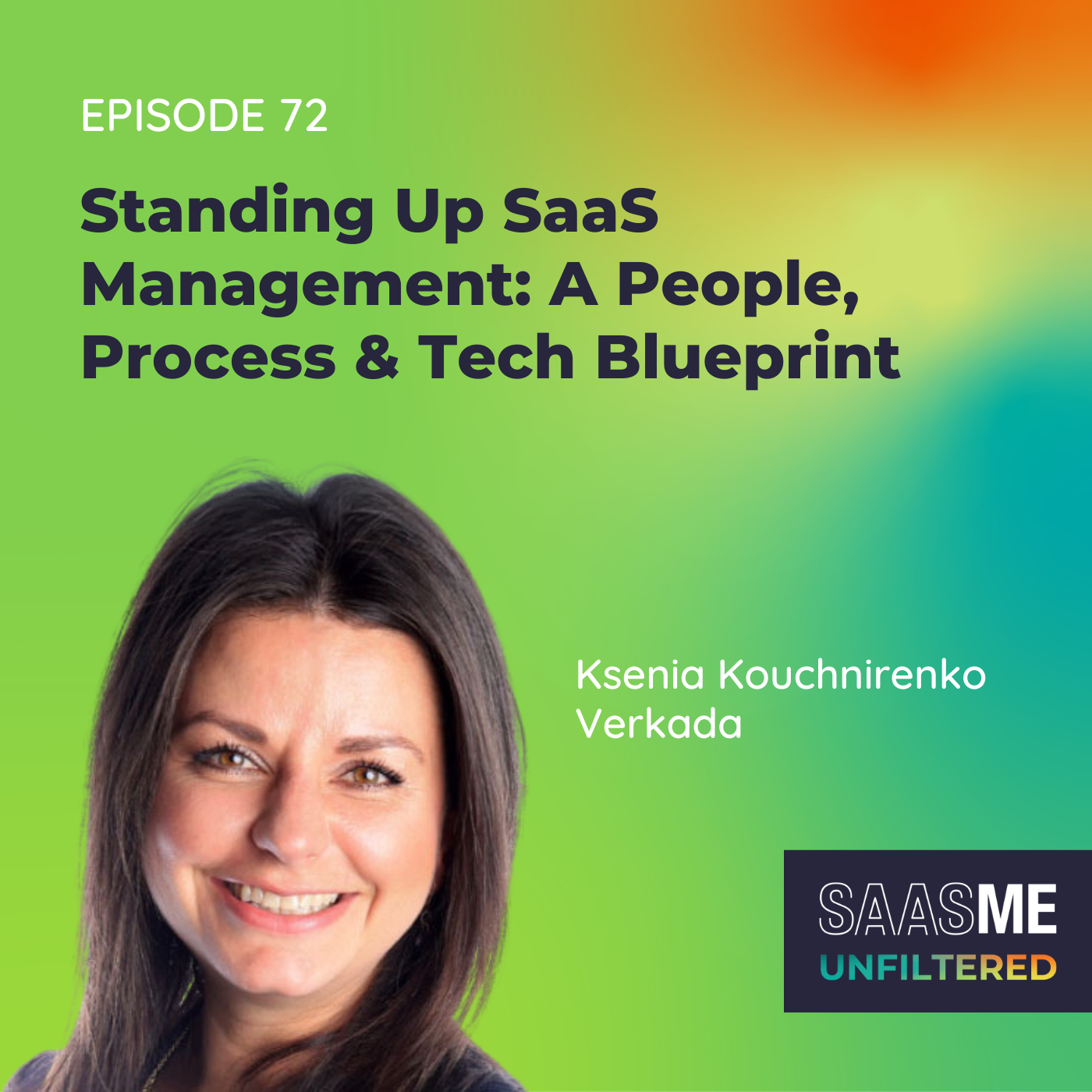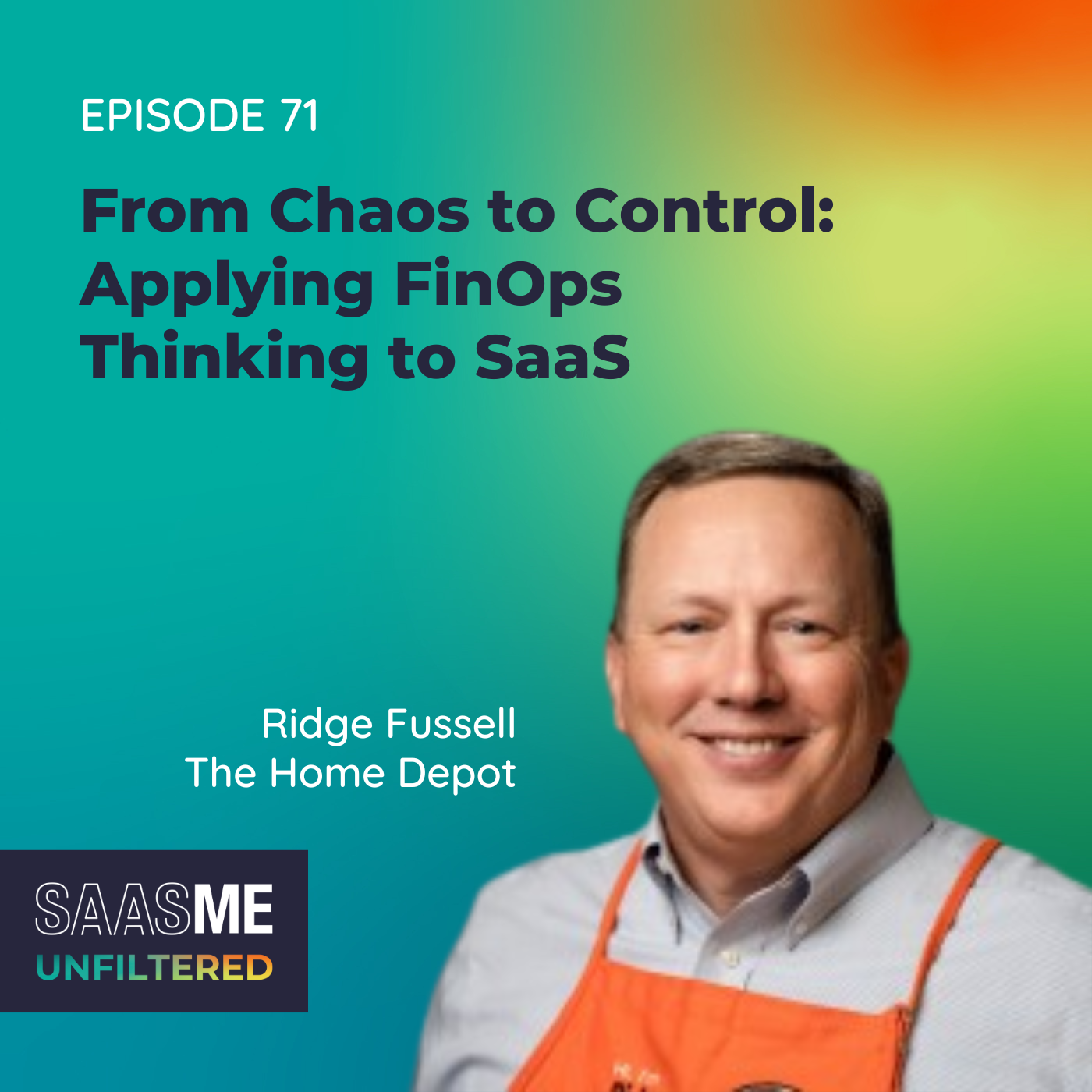Lance Giles: The New Era of Software Asset Management
- 0.5
- 1
- 1.25
- 1.5
- 1.75
- 2
Lance Giles: I walk over to our on- premises SAM solution, couple of keystrokes here and there. I extract all of the unique publishers that we have data for. I pass it off to the internal audit folks. And admittedly, in that moment, this is maybe 30 to 60 days into my job there, they responded almost immediately and said, where is Box? Where is Aha? Where is Sprinklr? Where is Airtable? What are those? That's what I was asking myself.
Cory Wheeler: Hello, hello, and welcome to SaaSMe Unfiltered, the SaaS management podcast, the show with give it to you straight, real life advice from pros knee deep in SaaS every single day, SaaS management superheroes just like you.
Ashley Hickman: Today. We're back for another episode of SaaSMe Unfiltered. So excited to have everyone join us. I'm Ashley Hickman, manager of customer success at Zylo.
Cory Wheeler: And I'm Cory Wheeler, co- founder and chief customer officer at Zylo.
Ashley Hickman: So today, we're mixing it up a little bit. We have a wonderful guest who is passionate about helping enterprises organize, optimize, and orchestrate their SaaS. Actually, he does this here at Zylo. Before joining Zylo, he was in software asset management consulting and then built the global software asset management function at Nike, owning the transformation of nearly 13,000 unique software applications across more than 1, 200 suppliers, achieving cost savings of more than 45 million in three years. He also is a huge sports fan, has a metaphor for literally every business outcome imaginable, always fun chatting with this individual. So welcome Lance Giles.
Lance Giles: Thanks for having me, guys.
Ashley Hickman: So Lance, thank you so much. You are Zylo's own SaaS evangelist. So, very excited to bring you onto the podcast. This has been a long time coming. So really excited to dig into a wealth of topics today. You've had a tremendous career and experience in SAM, that ultimately really evolved into a lot of SaaS management, as SAM really grew from on- prem to the cloud. You've seen this big shift, this evolution over the past decade plus of your career. So this is something that I would love for us to talk a little bit about today. Some of the major shifts that you've seen in software asset management, any insights, et cetera, really, that evolution you've seen across the space.
Lance Giles: There's quite a few shifts, really. But always start with the base fundamentals of any software license management function. I confidently believe it will be this way for the remainder of time. And that is, use what you pay for and pay for what you use. That is always the bedrock of any successful SAM function. Now, as we start to differentiate pure play, I'll call it pure play, on premises software asset management, relative to SaaS, how we get there, how we start to understand and amalgamate some of this metadata. Yes, it's a little bit different, but the fundamentals are just to ensure we pay for them and we pay for what we use. So an example of that is discovery. When we talk about on premises software license management, typically, we're talking about what is locally installed on company owned or leased devices? What's the name of the product, version, edition, maybe the operating environment? Is it a physical machine, virtual machine? What types of CPUs, the physical host? What clusters is it in? So on and so forth. So you spend the overwhelming majority of your time understanding what is deployed and what is out there. You shift over to SaaS. And the starting point is understanding what you've spent money on. In other words, the starting point is probably the biggest shift in how you manage SaaS relative to on premises software asset management.
Cory Wheeler: Is that because you've really got to set your priorities, and spend drives prioritization, or what's that spend component consist of?
Lance Giles: To scan an environment. This is the way software license management used to be. In order to even find the target applications that you are to manage and to keep an eye on, in order to define them you have to dig into the spend, you have to dig into the raw metadata related to where the money is going. And that can be very challenging because, if you go back a decade or so, there really were not as many applications then to access as there are now. Translated, we've got in excess of 20 plus thousand commercially licensable SaaS applications available. So just the breadth and depth of what is available, that has really changed how we even begin the process of understanding what to manage, how to manage it, how to measure it, and ultimately, if there are some remediation steps required to execute on those.
Cory Wheeler: I like how you frame that out. Your role in the SAM industry, being in consulting, really understanding the shifts in the typical organization is very cool. Your story then continues where you built and ran SAM at Nike, a global program. So I want to understand a little bit more about that. It's one of the largest, one of the most well known enterprises in the world. Typically, on these sessions, we'll ask, what was the oh shit moment? What was the compelling event for you or for Nike before you were there that really drove the creation of software asset management as a function?
Lance Giles: It was the perfect confluence of events, so I thought at the time. And this is about four years ago, give or take. There was a very public, very visible external software publisher audit that you can Google it today. And that had existed roughly 8 to 10 months before I started at Nike. And I illustrate that because in terms of my confidence that this was the right place for me and the right opportunity for me, responding to and developing game plans to respond to publisher audits, that's something that was a very comfortable lane for me to be in, very comfortable. So my point is that, as I was driving here and relocating from the Seattle area to the Portland area, perfect sunny day, me and my dog and a plant and a printer, and off we go, relocating. So my attitude, it couldn't have been better. This was a golden opportunity. And these are opportunities, really, they're hard to find. They're very hard to find, with literally green field to start and cultivate an asset management function. I felt as though I'd prepared myself for this moment for an extended period of time. And here it was.
Cory Wheeler: inaudible, right?
Lance Giles: That's right. Let's do it. This is good. We all want to build and grow our skill sets to that point where, when we get that at bat, we can make the most of it. But to address this specific oh shit moment, if you will, is, internally at Nike, because there was this highly visible audit, the internal audit folks wanted to know every software publisher that Nike did business with. My guess is that they just want to make sure that something like this does not happen again. So I did what any aspiring SAM professional does. I walk over to our on- premises SAM solution, a couple of keystrokes here and there. I extract all of the unique publishers that we have data for. I pass it off to the internal audit folks. And admittedly, in that moment, this is maybe 30 to 60 days into my job there. They responded almost immediately and said, where is Box? Where is Aha? Where is Sprinklr? Where is Airtable? What are those? That's what I was asking myself. Again, I thought this was the perfect opportunity. And it was, but that was a curve ball that happened almost immediately. And as I'm keying into our asset management solution, nothing is coming up. There's no entitlement, there's no consumption. And so, that was now what? I was paid to have answers. I thought that I had them, and I didn't. So admittedly, a little bit of self doubt started to creep in, is if I don't know about those applications that they had asked about, how many more were there?
Cory Wheeler: You had two compelling events, two oh shit moments, we'll call it. But the outcome of that external audit, the very first compelling event that you had, would you say that something to that magnitude, did that allow you the freedom and the confidence to be able to implement quickly and effectively at Nike, and then also allow you to act quickly when you found that there was a SaaS issue as well?
Lance Giles: Yes. So you want visibility internally. Oftentimes, setting up an asset management function. It's not so much about just the data and getting your hands on data, and utilization and consumption and license assignment. What you really need is visibility and support from leadership. And we had that. Now, granted, it was very, very likely because of this external publisher audit. But the point here is that all eyes were on us, back to that at bat again, this was a golden opportunity because it was so visible. Now, with that came quite a bit of pressure. They were not internal audit folks. We're not asking for resolutions. You're here to resolve, not only these external audit, singular, but also to understand what I now know comfortably, is managing SaaS and how that transpires. But a quick anecdote related to that external publisher audit that existed before I got there. What typically happens is, in the industry, once an external audit becomes public, there are other publishers that think to themselves, well, if that organization is using more than they've paid for, we're going to check in on them too. And so, all told, for six to nine months there, we had eight unique external audits. So when you have the expectations of our internal audit folks, and then you compound that with all these external forces to respond to them, I'm going to say it was a golden opportunity. But I'd be lying if I said it wasn't stressful.
Ashley Hickman: Absolutely. That's when it rains it pours, really?
Lance Giles: Yeah.
Ashley Hickman: So Lance, with all of that, 30 days in, where do you start with something like that where you're searching these applications in your existing system, like, nope, don't see Airtable, don't see some of these that we know are SaaS products? And then of course, a plethora of audits. So, what were those building blocks, those tools that you used, those processes, et cetera? Where did you start to ultimately build out that program, respond to those audits and get the visibility you needed?
Lance Giles: I started to rule things out. In other words, within our existing on- premises solution, if I could not understand what was installed or deployed in terms of SaaS, because there's nothing locally installed, I shifted over to follow the money. When in doubt, follow the money. So what I'd done is started to cultivate and develop relationships with folks in finance and procurement, and started to look deeper under the covers to see what is Nike spending money on, and to what extent, and what's kind of the general flow of where is the money going? So to address the question, follow the money. That's really the only place I could think of to go. There was a lot of Google searching and a lot of phone calls to industry contacts, and really just trying to get my arms around what to do. But again, fundamentally, content is king in a software asset management realm, and it can come in many forms. But to answer your question succinctly, follow the money and the spend. So I really started to outline the business case internally as to why I needed access to this content and why Nike needed access to it. And it did help to have so much of visibility on our function internally, that we're getting access to that content. That was step one, phase one, is just to understand the dimensions of that data.
Ashley Hickman: Are you blown away by the amazing work our SaaSMe Unfiltered guests are doing? Now, you can join them at SaaSMe, the industry's only SaaS management event. Hear from the experts, discover trends and learn from the pros knee deep in this shit every single day. Register today at SaaSMe. com. That's S-A- A- S- M- E dot com.
Cory Wheeler: I want to hit on data here in a moment, but I kind of want to talk a little bit about that landscape when you came in at Nike. Huge organization, over 50,000 employees. SaaS in and of itself is a very distributed category. Everybody is a buyer, departments, teams, individuals, orgs. I mean, anything you can imagine, it's everywhere. And that's usually a lot of the value that our customers see when they implement. There are way too many titles internally, triple the amount that they thought were there. So internally at Nike, there were also additional processes going on throughout the business that seemed like they were SaaS management processes as well. What was happening internally when you started looking at SaaS? What did you find around the organization? And how the heck did you start to put a strategy around such a distributed category in such a large enterprise?
Lance Giles: So every playbook, runbook, every guide that has ever been authored around the topic of software asset management, or ITAM or ITIL, all of them, 100% of them, either number one or number two on the list of priorities was centralized. That's what I had been conditioned to learn over the previous, whatever it was, 10, 15 years. Centralize. Bring all of the data together, bring the decision making together. What I quickly learned is that SaaS just simply doesn't function that way. So that push and pull and that balance of, what does it make sense to centralize? And what does it make sense to leave to the business to own? That was the biggest challenge that I had, just trying to understand centralization. It's very easy for me to say that, and I can speak to the virtues of why it makes sense to centralize. Just the way products are delivered nowadays, it just isn't pragmatic. So understanding that push and pull, that was extraordinarily challenging. And like I said, I didn't know any better. I didn't know any better. Centralization, that's key. If I knew then what I know now, I certainly wouldn't have leaned in so heavily on ensuring that everything was centralized.
Ashley Hickman: How did you do it, Lance? You had follow the money, love that. And I'm sure that's where you uncovered a lot that you didn't know about. And then also, to your point earlier, kind of that evolution that you've seen, it's just different. It's different. You have to shift, you have to pivot. Using those sports analogies where I can.
Cory Wheeler: You're hitting it out of the park.
Lance Giles: There we go.
Ashley Hickman: I played basketball one time. Pivot, pivot. So what did you do next? You followed the money. Your playbook, it's officially out of date, right? Centralization, that's not going to happen. So from there, and you mentioned it was a big struggle. What's next?
Lance Giles: You bring people together. When you think of centralization, I think we can reasonably extrapolate what that means. But when you're working a more of a decentralized organization or environment, that is the golden opportunity for any software asset management function to where, effectively, what we started to do is one. We just started to socialize content through varying business groups. And this wasn't damning content. It was just, if we have 35 project management tools, I just want to educate the masses on how many we have in an effort to come together and say, do we really need this many? So it was less about taking action on data, but more importantly, it's bring people in disparate groups together. And what that also does, a byproduct of that, is it helps to keep your program relevant. So oftentimes, what happens is, an ITAM or a SAM function, it lives within IT, just typically. Exceptions exist, certainly. But now everybody, and Corey, you had already alluded to this, that it's very easy to purchase technology nowadays. It's a swipe of a corporate credit card. My point in mentioning that is that everybody in the company was a software asset manager. So we just had more groups and more individuals to connect with, and cobbling together some steering committees, and just let the great people, let them work together. So you bring them together and understand why we're here. We ultimately just want to do what makes the most sense for our employer. And so it became a bit of a matchmaker, is really what we did.
Cory Wheeler: Yeah. That's a good way to think about it. So on that centralization concept, if I'd have known then what I know now, you mentioned that you were in consulting, you worked for a very large SAM consultancy. You've been in SAM roles. This is a two part question. What are some of the classic missteps that you've seen in rolling out a SAM strategy? Centralization made us really kind of think of this. And then what were the lessons you learned as you built the global organization at Nike? Maybe they're the same things, maybe they're different, but I'd love to hear your thoughts about the space, and then specifically what you experienced.
Lance Giles: If I had a nickel for every time I heard from individuals inside Nike, but also the organizations that I'd consulted for. It's, we do a good job, we know what we have, we are fine. So what I'm referencing there is, assuming that you have a handle on everything. Now, I'm not here to suggest that somebody doesn't. But what I am here to suggest is that we want to put irrefutable, quantifiable fact to paper, and then make decisions based on those facts. Some of the classic missteps were perhaps challenging certain, what I'll call application owners, challenging them to let me and my team run and operate and manage it. Really, would've taken a bit more of a delicate approach. But again, if I could do it over again, I would just want to say that we want to put irrefutable, quantifiable fact to paper. And oftentimes what'll happen is, especially with SaaS, it's very easy to overspend. It's very easy to buy a hundred widgets and maybe use 40 of them. It's very easy to do. So I just wanted to highlight the opportunity to achieve cost savings, or just, honestly, just do what makes the most sense for our employer and not guess at what we're doing. Well, we need a hundred. We're growing. So let's just add another 200 next year and so on and so forth. Let's let the data tell us what we want to predict.
Cory Wheeler: I like that. What's old is new as we talk about pitfalls and challenges. Talk to me about, we've had this conversation offline a few times, the shift and the evolution of software. Massive tectonic shift when SaaS came, subscription based models, cloud based models, that really shifted the old licensing model into a user based pay as you go, you always know your utilization, kind of ding dong the death of software asset management. We don't need to manage everything if there's an admin console that tells us where our licenses are. So let's continue to fast forward. What we're seeing now, a huge emerging trend is the shift from user based to consumption based or value based models, in which you genuinely have to monitor and meter what's going on, how you're leveraging that software. And if you don't, you get yourself into a very, very dangerous scenario. We had a customer with a popular platform go from$ 2, 000 in expense spend to nearly just under a million dollars in spend in two years with a platform because it was attached to their product, and monitoring their product and providing details back about what they were doing inside their product. I ramble on this long inaudible to just get your thoughts of, are we back to 20 years ago, where 20 years ago you were managing user and server based licenses and installs and all the different variables of software? And now we're getting back to the same principles because software has shifted, that you have to pay attention to it or else it can get dangerously out of control.
Lance Giles: My instinctive reaction to this topic is, we have to look at the software publishers, understand what drives them. They're clearly for profit businesses, they're trying to monetize their intellectual property. So if we go back 10, 15 years and understand that the rules, if you will, product use rights, end user license agreements, the rules have always slightly shifted. They've always slightly shifted. Soon as you feel like you have a handle on how to measure certain applications or suites of applications, there's a subtle shift, or the way products are bundled, or how they're delivered. So all told, you have to pay attention at some level, or have people around you that are just paying attention reasonably as to what is happening in the market. So the software publishers will always shift. They will always ebb and flow, and like I said, do what makes the most sense for them and their bottom line. So I highly encourage folks to always keep your eye on them and do not assume that if something is licensed by a user today, there is no guarantee that it's going to be licensed by a user tomorrow. Or perhaps the definition of user is going to change. Something is going to shift. They really never stay static.
Ashley Hickman: Kind of forward thinking, to Corey's point, we're seeing a lot of SaaS products shift. If it was consumption based, they're adding a user component. If it was user based, they're adding a consumption component. Or just, we're switching entirely. So for the SAM professional, what do you see the future of that kind of evolving into?
Lance Giles: And we kind of talked about this earlier, where the function sits inside of an organization, it's vital. Now, with SaaS and with cloud, we're really having conversations of cost. That's really where the focus is. And so I mention that because finance, I think, and I see the future of software license management, ultimately being a part of finance. And it has to be global finance. In other words, being sequestered into a specific group that doesn't oversee an entire organization, that's going to make success very challenging for a software asset management function. Being an extension of finance, that's where I ultimately see the best fit for it. But I will say that the opportunity in the software license management space today, it's never been greater. It's never been more encouraging. I've never been more excited about it because I see the software license management function truly being the center of that Venn diagram, whereby we're connecting to legal and human resources and supply chain. And I really see software license management moving from an IT function to the center so that we can impact more people and, like I had mentioned, the relationship side of the ledger. I think visibility is going to explode for software license management functions.
Cory Wheeler: It's the same concept, because of my procurement background, that I shout from the mountain tops. When something is fully distributed, the centralized teams are the ones that must stand up, that must take on that strategy and really raise their profile. So I think the shift of software, as opposed to being the demise of SAM, is really the accelerator of SAM. And you just hit it beautifully, by being the center of the organization, truly being that shared service, that your businesses are your customer and bringing that intelligence and action to them. I think that's a wonderful way to put it.
Lance Giles: And I've talked with a few colleagues in the industry. I'm also encouraged as to how many ITAM professionals exist just overall, just this industry. It makes my day, thinking about it, where it was just an acronym, SAM, back in the early 2000s. Now to see all of these communities and partners and tool vendors, it's encouraging. We're here to stay. The ITAM function or SAM functions, we're here to stay. It's just, we've got to be prepared to evolve and adapt and look no further. If we go back to the publishers and some of their motives, that you're starting to see them, I wouldn't say force, but let's just say heavily encourage you to put your data into their cloud environments, from perpetual to their cloud. As that continues to shift and evolve, the opportunity is solely on the cloud and the SaaS side, with the understanding that there will always be a need for on- premises software asset management. There will be. Certainly, we have to pay attention to that as well. But as the spend continues to become the rule, that the cloud and SaaS spend tends to become the rule now, and on premises spend, it's starting to slowly become the exception, if you will.
Cory Wheeler: You're absolutely right. At Zylo, we're six years old. Six years ago, when we began in the space, there were a lot of progressive software tech type companies that were fully in the cloud. So it made so much sense. SaaS management, we didn't have to explain what it was to them. The large enterprises, they said," Yeah, we have SaaS, but really all of our core infrastructure, our core application base, it's all here. We got the server room, got a great group of folks that manage all of that." And now, fast forward to 2022, these huge enterprises, SaaS management is their next large priority. So it's been fun to watch this all come together. So Lance, it's time for the world famous rapid fire word association segment on SaaSMe Unfiltered. We are going to throw out a few high level concepts. You give us your genuine response back on what we throw out there, okay? You ready?
Lance Giles: I can do that.
Cory Wheeler: SAM.
Lance Giles: The future.
Ashley Hickman: Dang. Zylo.
Lance Giles: Rocket ship.
Cory Wheeler: I like it. All right. Let's shift to some passion here, Lance. Greatest team ever.
Lance Giles: This is tough, probably'95/'96 Chicago Bulls would be. Doing 72 games in a season and cash in the championship, that's going to be tough to beat.
Cory Wheeler: I mean, yeah, unless you were the 1972 Miami Dolphins. But that's a different discussion for a different day.
Ashley Hickman: Okay. Greatest athlete ever.
Lance Giles: Tiger Woods.
Cory Wheeler: Ah, very nice. Fantastic. Lance, this has been so much fun. Getting us all together, talking about the future of our industry, the future of what you've spent a career putting together as well. We're lucky to have you on board to share your story. We're lucky to have you on board as a colleague here at Zylo. So thanks so much for joining us on SaaSMe Unfiltered today.
Lance Giles: Thank you guys very much. I'm grateful and humbled. And it's exciting to call your teammates now.
Cory Wheeler: Did you enjoy the episode? Pass it along to your friends. Subscribe to get notifications for the latest episode. Share your favorite takeaways, and join the conversation on social media using# SaaSMeUnfiltered.
DESCRIPTION
Software Asset Management rose with the need to manage on-premise software. However, the birth of SaaS and cloud-based applications has changed the game. In this episode, former Nike SAM pro and Zylo SAM evangelist, Lance Giles, shares what a golden opportunity software asset managers have in front of them and the lessons he’s learned diving head-first into SaaS management.
Episode Highlights
- [01:55] Lance Giles reflecting on shifts in his software asset management experience
- [05:20] Building and running a global SAM project at Nike
- [08:31] Visibility and support from leadership for SAM goals after an external audit at Nike
- [10:42] A process of elimination in deploying a SAM strategy and effort
- [13:02] Centralize and bring data together, bring decision-making together
- [15:14] Everybody in the company was a software asset manager
- [17:34] Classic missteps Lance has seen in rolling out a SAM strategy, and lessons learned
- [19:37] Pay reasonable attention to what is happening at the software market
- [22:28] On SaaS products shifts and the opportunity in SaaS
Today's Host

Ben Pippenger
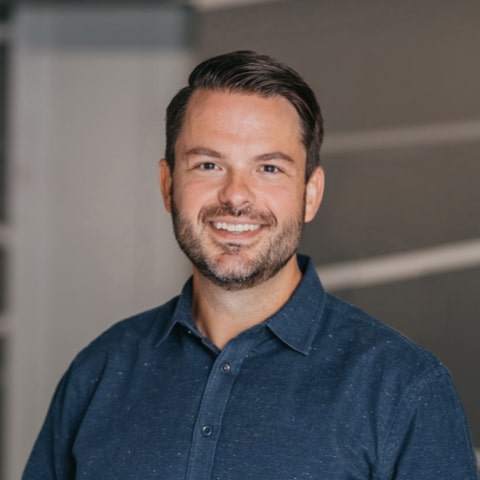
Cory Wheeler
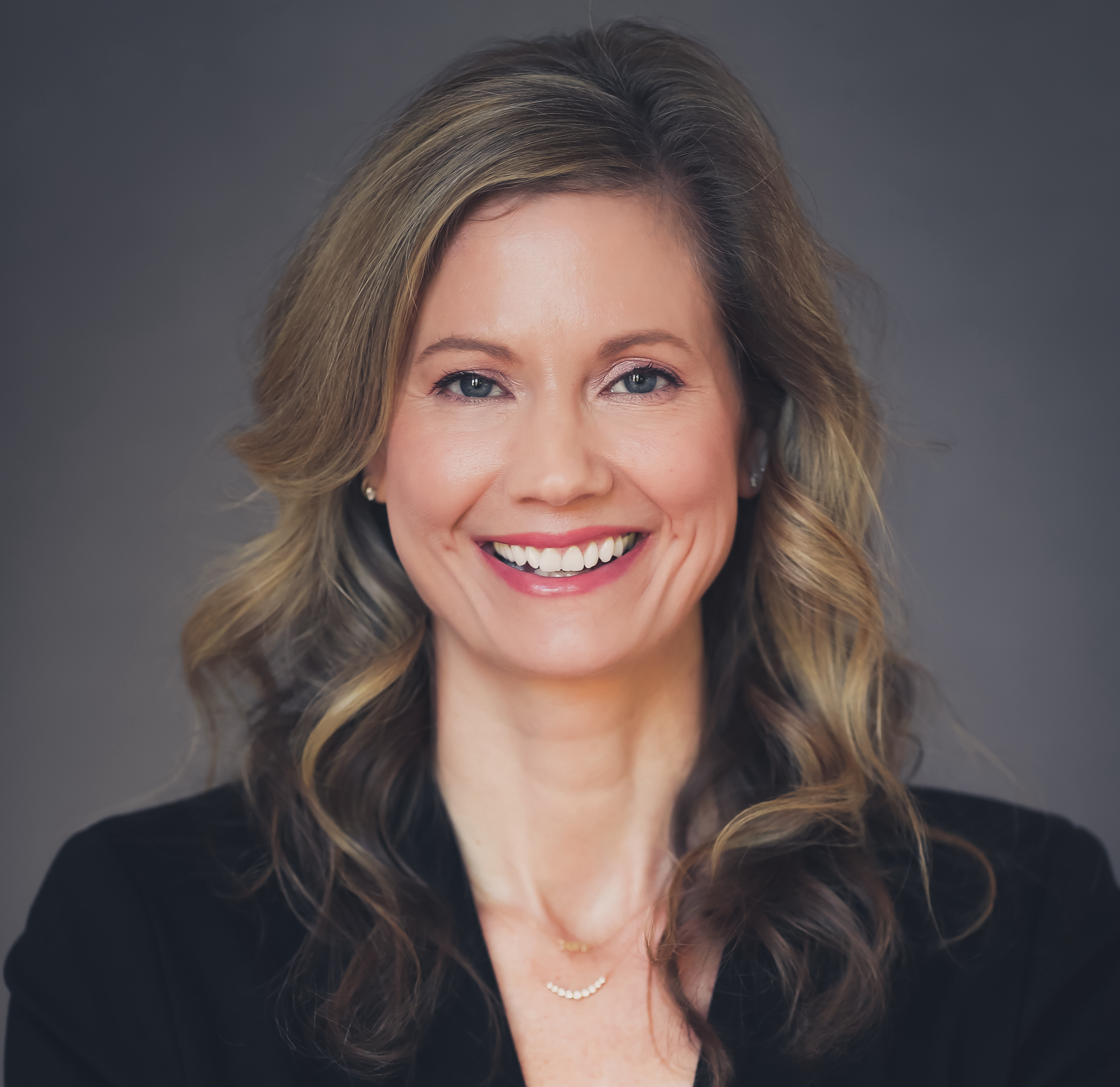
Meredith Albertson
Today's Guests


